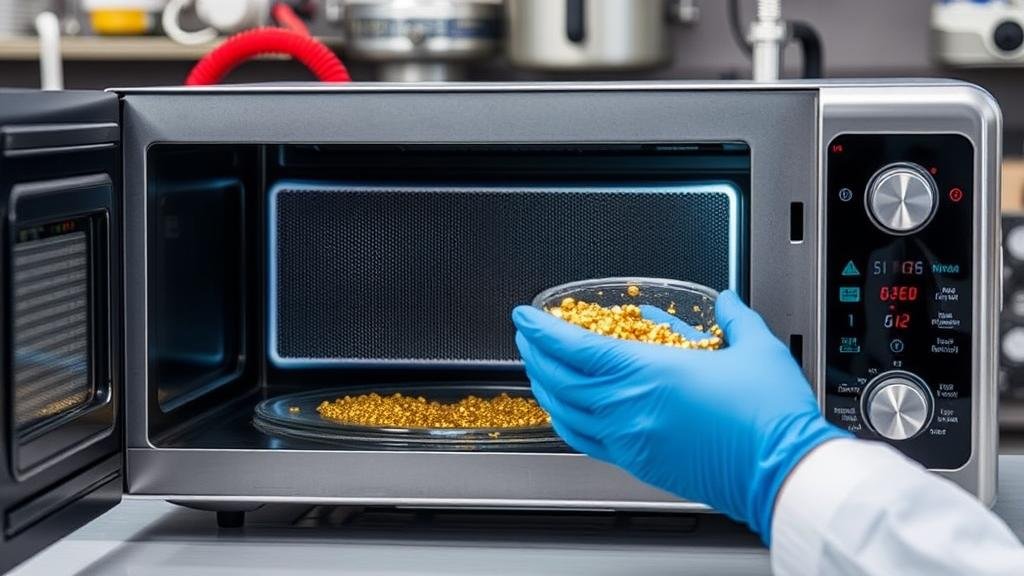How to Apply Microwave-Assisted Leaching for Faster Gold and Silver Extraction
How to Apply Microwave-Assisted Leaching for Faster Gold and Silver Extraction
Microwave-assisted leaching (MAL) is an innovative technique that has garnered attention in the fields of metallurgy and hydrometallurgy for its ability to enhance the extraction rates of precious metals such as gold and silver. This method combines traditional leaching processes with microwave technology, leading to significant improvements in recovery times and efficiencies. This article provides a comprehensive overview of how to implement this technique effectively in a practical setting.
Understanding Microwave-Assisted Leaching
Microwave-assisted leaching involves the use of microwave radiation to heat the leaching environment, which accelerates the chemical reactions between the reagents and the metal ores. Traditional leaching methods generally require extended periods to extract metals; however, integrating microwave energy can dramatically reduce processing times by enhancing the energy transfer within the ore material.
The Principles Behind Microwave-Assisted Leaching
The effectiveness of MAL is rooted in the improved kinetics of leaching reactions when heat is applied. Microwaves facilitate rapid heating by exciting polar molecules in the ore and solvent. This results in:
- Increased dissolution rates of metals.
- Enhanced solubility of precious metals due to higher temperatures.
- Reduced leach times, which can fall from hours or days to mere minutes.
Steps for Useing Microwave-Assisted Leaching
1. Selection of Feed Material
The first step in applying MAL is identifying suitable feed material. Not all ores are alike, and their mineralogical characteristics significantly influence the efficacy of microwave leaching. Ideally, ores with a higher concentration of gold or silver and sufficient leachable minerals are preferred. For example, sulfide ores such as pyrite or chalcopyrite can exhibit better results when treated with MAL.
2. Preparation of the Leaching Medium
The choice of a leaching agent is crucial. Common leaching solutions include:
- Acids (e.g., sulfuric acid for copper and silver extraction).
- Cyanide solutions, especially for gold extraction.
The concentration and pH of these solutions should be optimized based on the mineralogy of the ore.
3. Equipment Setup
Microwave-assisted leaching requires specialized equipment, such as a microwave oven capable of generating controlled temperatures and pressures. The reaction vessel must be designed to ensure even exposure to microwave radiation and prevent overheating. The system typically includes:
- Microwave reactor.
- Temperature and pressure monitoring systems.
- Stirring mechanisms to evenly distribute the leaching solution.
4. Conducting the Leaching Process
Once the preparatory steps are complete, the leaching can be conducted. The process typically encompasses the following phases:
- Loading the ore and leaching solution into the microwave reactor.
- Setting the microwave parameters (time, power output).
- Initiating the reaction while carefully monitoring the temperature and pressure conditions.
Experiments suggest that leaching times can be dramatically reduced to around 10-15 minutes, compared to hours or days with traditional methods.
5. Post-Leaching Recovery
After the leaching phase, the next step involves separating the dissolved metals from the leaching solution. This can be achieved through techniques such as:
- Precipitation (e.g., using zinc dust for gold recovery).
- Electrowinning for both gold and silver extraction.
Case Studies and Real-World Applications
Several studies have confirmed the effectiveness of microwave-assisted leaching in industrial applications. For example, a project in the Philippines demonstrated a 98% recovery rate for gold from a low-grade sulfide ore using MAL technology, significantly outperforming traditional leaching methods.
Another case study in Australia showed that the application of microwave heating prior to leaching led to a 40% increase in silver recovery rates. These examples underline the practical benefits of adopting MAL technology, especially for mining operations looking to improve their metal recovery efficiency.
Conclusion and Actionable Takeaways
Microwave-assisted leaching represents a significant advancement in the extraction of precious metals. By leveraging the rapid heating capabilities of microwaves, operators can improve leaching efficiencies, reduce processing times, and enhance overall metal recovery rates. To maximize the advantages of MAL:
- Conduct thorough assessments of feed materials to identify the most suitable ores.
- Optimize the leaching conditions including reagents, temperature, and exposure times.
- Invest in appropriate equipment for microwave leaching and ensure systematic monitoring of the process.
As the industry evolves, embracing innovative techniques like microwave-assisted leaching will be essential for maintaining competitiveness in gold and silver extraction.


